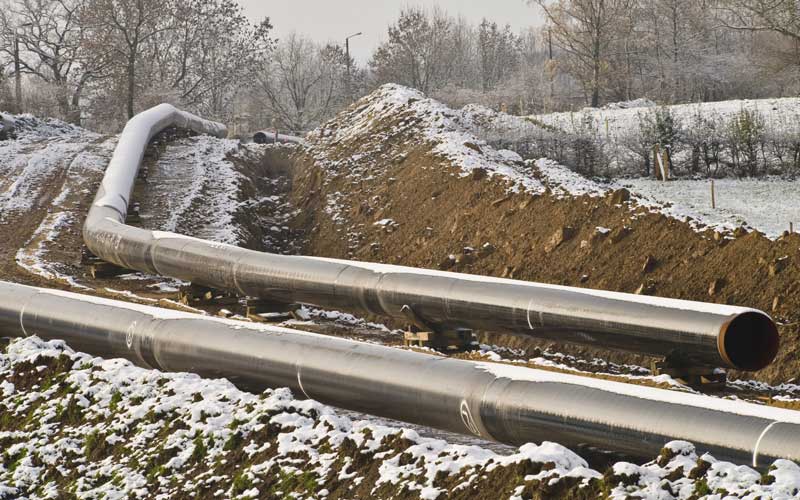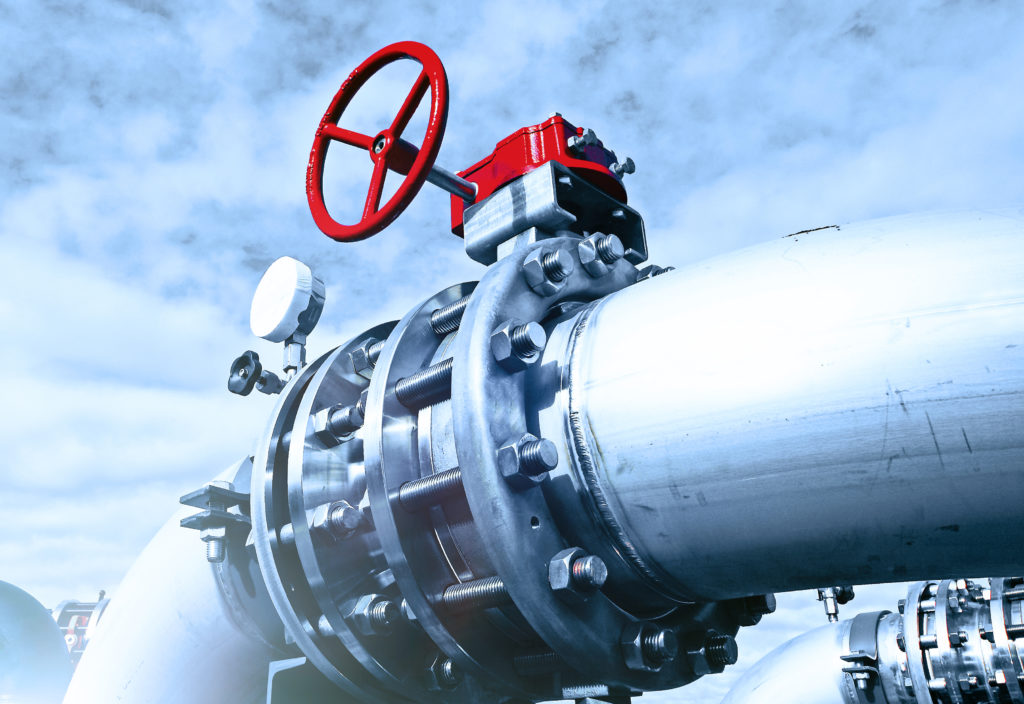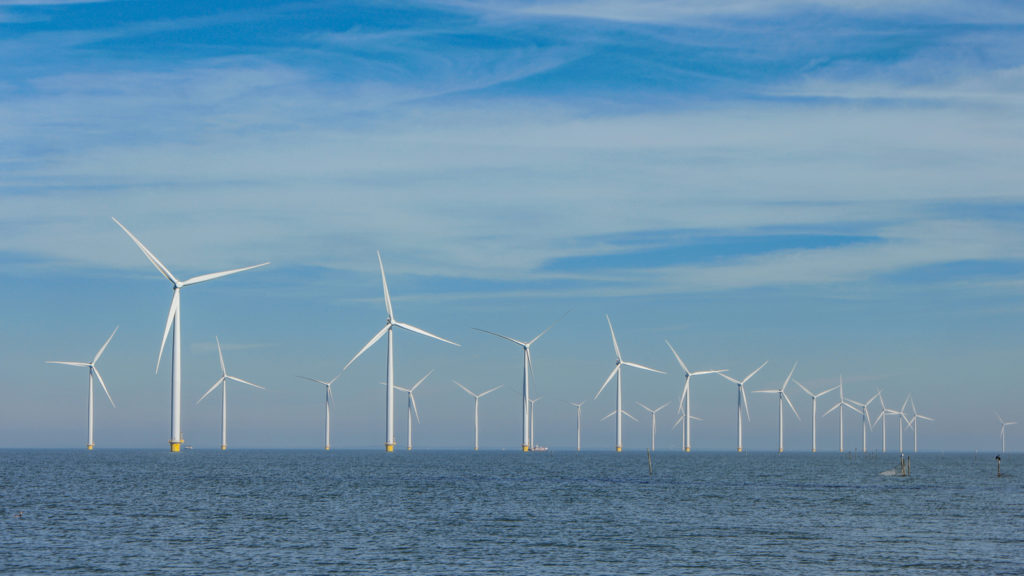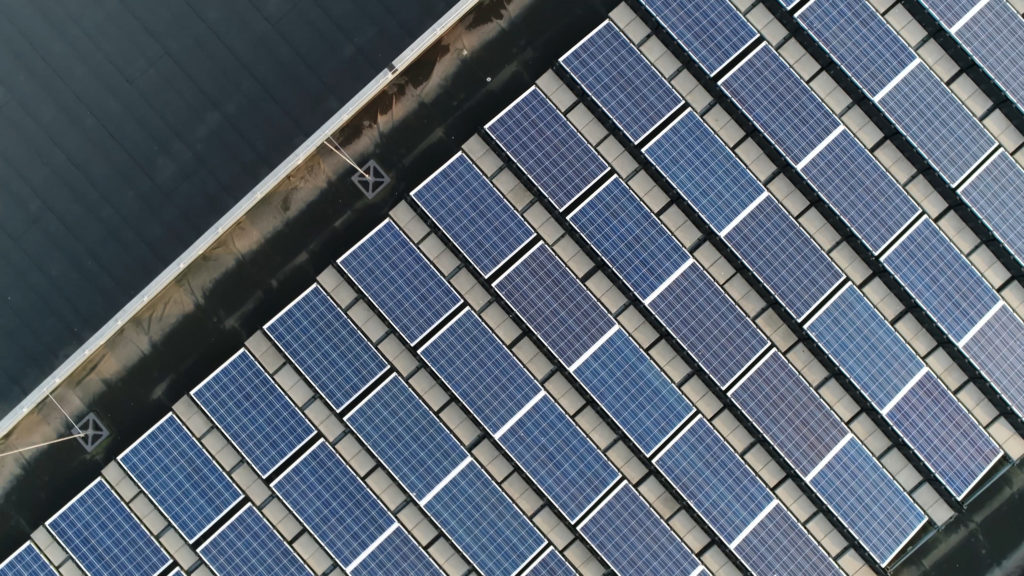Every winter, as the days get shorter and the air chillier, Greg Cunningham braces for what’s to come. But it’s not the raw New England weather that he’s preparing for; it’s the annual outcry from the oil and gas industry creating panic about rising prices and fuel shortages.
“It’s the usual refrain that we need to frack more gas and build more pipelines,” says Cunningham, who heads CLF’s Clean Energy and Climate Change Program. “They want to scare us into continued fossil fuel addiction.”
Most frustrating to him is that this rhetoric runs entirely counter to the policies of the New England states, five of which have passed laws that require they slash climate-damaging emissions from fossil fuels.
Big Gas Has an Unexpected Ally in its Fearmongering

What’s surprising is that the script for Big Gas’s annual fearmongering tour is written by none other than ISO-New England. Electricity in any given New England state is generated locally. But its sale and transmission are managed regionally by a nonprofit entity called ISO-New England (short for Independent System Operator-New England), based in Holyoke, Massachusetts.
“We’ve come to expect these scare tactics from Big Oil and Gas,” says Cunningham. “But the real threat is that their desperate alarmism is being legitimized by a supposedly credible source: ISO-New England.”
Our regional grid operator should be a strong partner with New England states, helping them loosen the oil and gas industries’ grips on our pocketbooks – all while creating a grid and electricity market that ensures a quick ramp up of renewable energy. The stakes are nothing less than the indiscriminate disruption of New England’s economy, environment, and health if climate-damaging emissions from dirty fuels remain unchecked.
Ending the region’s reliance on gas is even more urgent following the findings of the Sixth National Climate Assessment, which served as a “code red for humanity,” warning of catastrophic impacts if we don’t take immediate action to meet global 2030 goals for cutting carbon pollution.
Rather than supporting state-level goals to lower emissions, however, “we hear the same message from ISO as we do from Big Oil and Gas: ‘Gas is going to get more expensive, people are going to face a spike in energy costs, and we’ll contend with rolling blackouts during extreme temperatures,’” Cunningham says. “They claim it’s all because we don’t have enough gas and oil to meet our heat and electricity needs.”
But we know that’s not true. Separate reports released in recent years by CLF and the Massachusetts Attorney General’s office show that the region has more than enough fuel to make it through even the coldest winter without saddling residents with the billion-dollar costs of new gas plants and pipelines.
Shackling Us to Gas Costs Our Health and Our Dollars

The fact is, there’s nothing inexpensive about gas. The price and availability of gas can fluctuate wildly – and it has for decades. Some years, it’s due to severe weather like the Polar Vortex. In other years, that volatility results from pipeline mismanagement and malfunction.
These cost risks are ever-present with gas, which is one of the reasons New England’s over-dependence on the polluting fuel for both heat and electricity is so problematic.
This year is no exception. “Energy costs are higher this winter,” says Cunningham. “That is challenging and troubling, especially for those who already struggle to pay their monthly utility bills.” The answer, however, isn’t to build more pipelines and frack more gas. “What we need is to finally break free of this polluting fuel and invest wholesale in growing our supply of clean energy,” he says.
Not to mention, sinking consumer funds – dollars that would be added to our gas and electricity bills – into new power plants, pipelines, and other infrastructure will further entrench our reliance on this climate-polluting fuel. That’s simply a bad investment all around. Gas pipelines and power plants built today will stand for the next 50 to 100 years. That means our children and grandchildren will still be paying for them long after scientists say we need to cut the fossil-fuel cord.
And, as those with the financial capacity to switch to heat pumps and other clean alternatives abandon gas, the costs for that new fossil fuel infrastructure would fall on a shrinking customer base – one made up of those least able to afford the ever-increasing gas bills that would result.
Scaring Us Into a Deeper Addiction to Dirty Fuels, Every Winter
Why, then, do we still hear the myth that without more gas we will risk blackouts and suffer seasonal spikes in costs? Because fear sells. During a time of energy transformation, scaring New Englanders is an easy way to maintain the status quo of fossil fuel dependence.
It doesn’t matter that the status quo will prove devastating and costly to the region’s families and businesses – or that it would deepen the region’s reliance on a potent climate-damaging fuel. It also doesn’t matter that the communities most vulnerable to climate change, including low-income families, bear the brunt of these winter spikes and the harms of a fossil-fuel–dominated economy.
And the fearmongering isn’t subtle. Every winter, ISO-New England releases a “Winter Outlook” in which it cries wolf about impending fuel shortages. It’s practically a paid advertisement for gas, with the regional grid operator bemoaning the region’s failure to build more gas pipelines, as it advocated years ago.
The problem, says Cunningham, is ISO-New England’s perception of its mission. “The ISO sees itself as having three jobs: to keep the lights on, keep electricity prices low, and plan the future of the region’s electric system,” he says. It doesn’t see helping states meet their climate goals by shifting from its fossil fuel-centric approach as part of the package.
ISO is Slowing Climate Progress in New England

But that interpretation is losing favor with state leaders, who see a critical role for the grid operator in helping to advance climate laws.
Massachusetts, Connecticut, Maine, Rhode Island, and Vermont all have laws on the books that mandate deep cuts in climate-damaging emissions by 2050. Those states represent 90% of the electricity consumption in the region. Without cooperation from ISO to help build an abundant clean energy supply in New England, meeting these mandated cuts will not be impossible, but it will be harder.
All of this necessitates a shift in ISO-New England’s gas-heavy perspective on power generation to one that accommodates the states’ plans to draw down emissions through clean energy. Instead of making that shift, however, ISO is continuing to limit the region’s ability to advance clean power by maintaining an outdated market system that promotes dirty fossil fuels like gas over large-scale wind, solar, and other clean sources.
Policymakers and regulators have become so fed up with ISO-New England’s lack of cooperation that, last year, all six New England states called on it to reform its mission statement. And yet, the grid operator still didn’t acknowledge climate change in its response to state leaders.
The proposed Killingly gas power plant in Connecticut is just one example of ISO’s wrong-headedness in action. In 2019, the plant secured a seven-year commitment from the grid operator to provide power to the region starting in 2022 – despite ISO claiming at the time that it was making moves to support clean energy.
What’s more, ISO granted the contract even though its own estimates showed that New England already had more power supply than the grid operator needed to meet the region’s projected electricity demand.
In the end, local opposition, delays, and a lack of financing for the plant forced ISO to make an about-face. It asked the Federal Energy Regulatory Commission to revoke the Killingly gas plant’s contract in January of this year.
“What was most distressing about Killingly was that ISO granted this potential polluter a contract at a time when its services were not needed,” says Cunningham. “ISO wasted two precious years on a dirty project that everyone knew was a loser from the start.”
Clean Energy is the Future, ISO Needs to Catch Up

The reality is, even if ISO’s annual doom-and-gloom “fuel scarcity” scenario was a real risk, building more gas infrastructure wouldn’t be the best solution. Clean energy can keep the lights on reliably and lower New Englanders’ utility bills. It also avoids the wild price fluctuations suffered by gas. The combination of well-distributed energy producers like rooftop solar, larger-scale solar and wind, battery storage, and power line connections to other regions will go a long way toward securing our region’s electricity supply (and, ultimately, displacing gas).
With clean energy growing at such a fast pace in the region and climate scientists warning of such dire consequences without urgent action, there’s no more time to waste arguing about a dirty fuel that’s damaging our climate and getting more expensive, says Cunningham. “ISO-New England can either be a help or a hindrance,” he continues. “It can choose to catch up with state efforts to cut fossil fuel use and transition to renewable energy sources. Or it can stick with Big Gas’ old, outdated playbook that relies on scare-mongering fiction over fact. If it chooses the latter, it will be at its own peril.”
Cunningham and his team aren’t waiting for ISO-New England to choose, however. They continue to work with allies to advocate for market reforms the grid operator could implement to lessen the region’s dependence on gas and boost clean resources. If the grid operator fails to keep pace with the region’s energy transition on its own, then strong state policies that push gas out and pull clean energy in will force the matter.
“The bottom line is that our electricity supply will be affordable and secure as we wean ourselves off of fossil fuels,” says Cunningham. “What’s at stake here is not just the threat of more expensive bills to pay for gas and gas infrastructure, but the urgent threat to our climate future. It’s time to turn down the gas for good.”
A version of this story originally appeared in the Winter 2019 issue of Conservation Matters.

